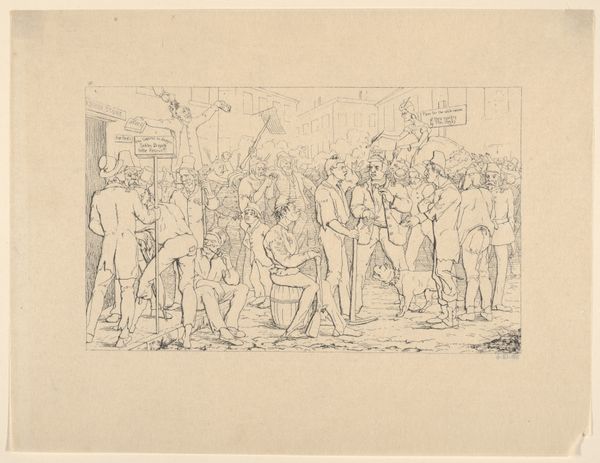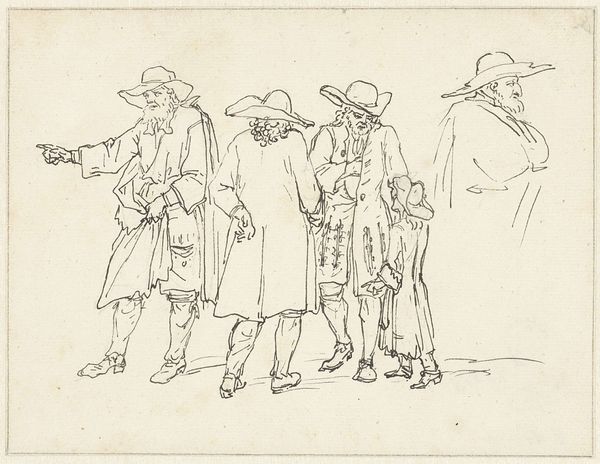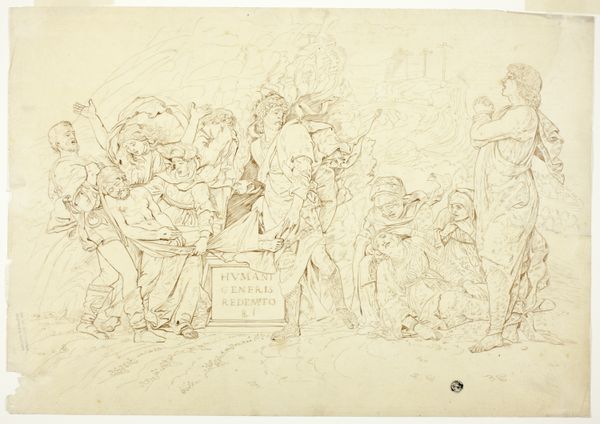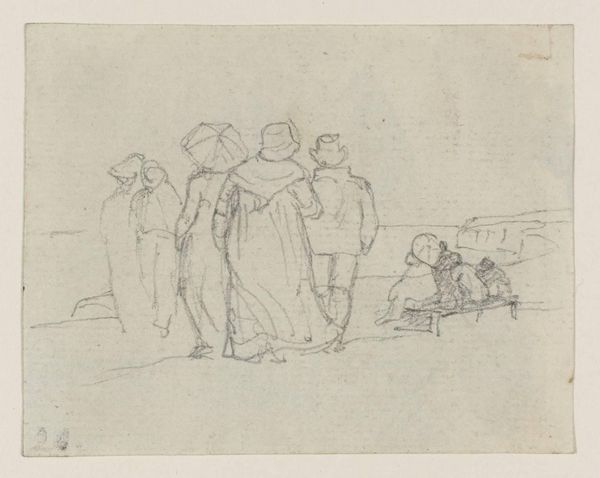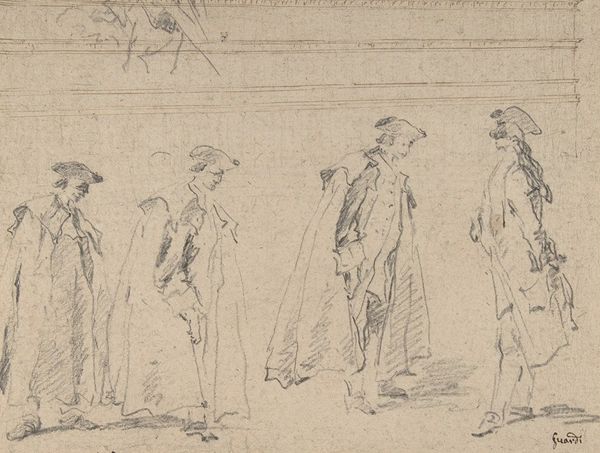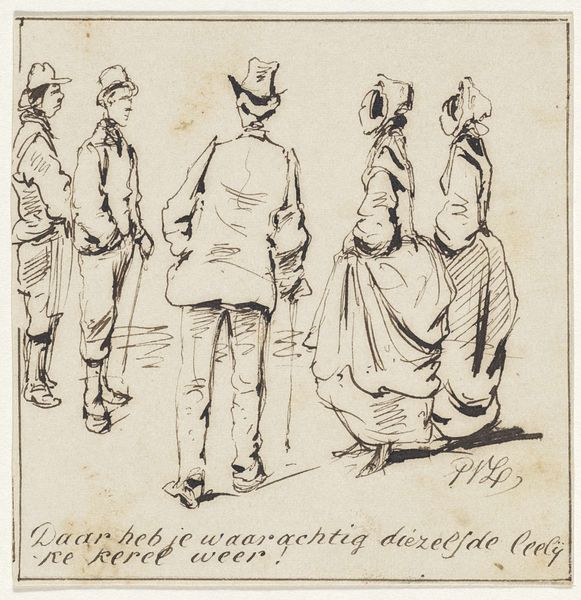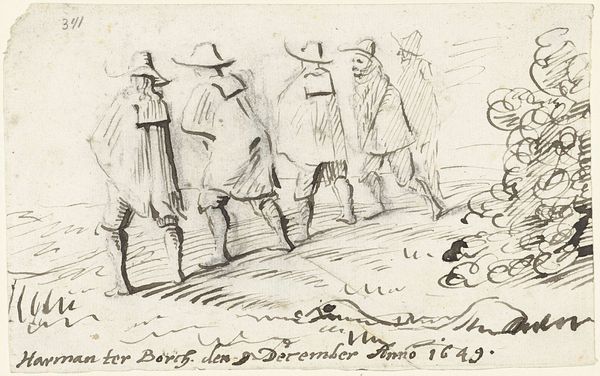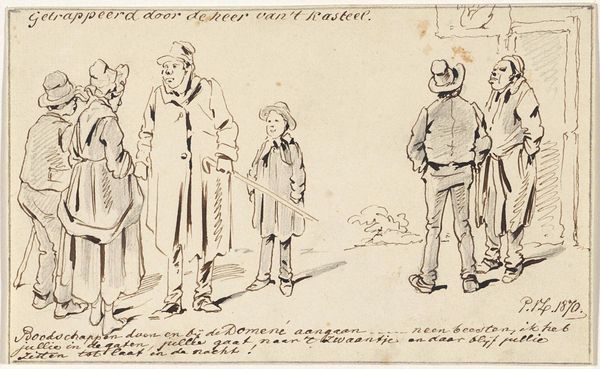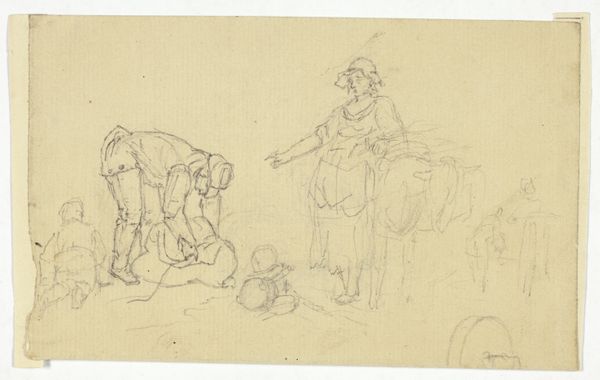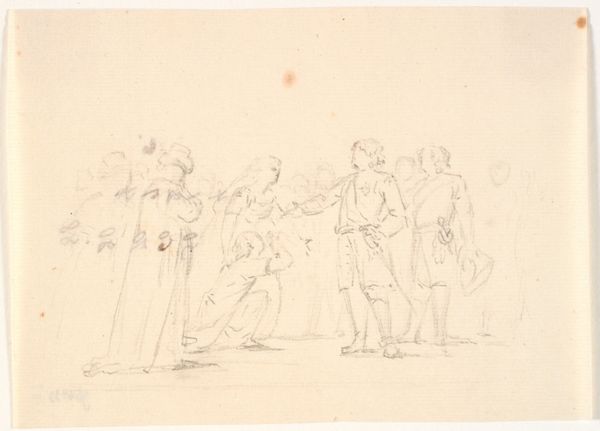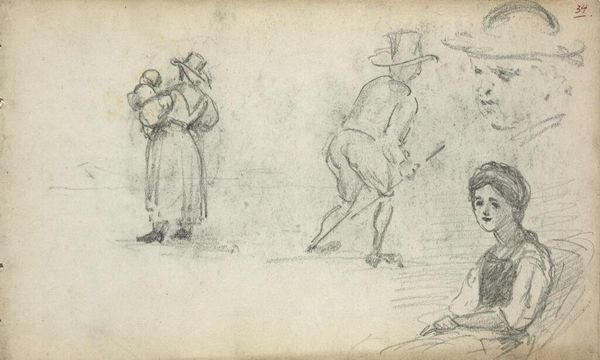
drawing, pencil
#
drawing
#
light pencil work
#
quirky sketch
#
dutch-golden-age
#
pencil sketch
#
figuration
#
personal sketchbook
#
sketchwork
#
ink drawing experimentation
#
pen-ink sketch
#
pencil
#
line
#
sketchbook drawing
#
genre-painting
#
storyboard and sketchbook work
#
sketchbook art
Dimensions: height 128 mm, width 155 mm
Copyright: Rijks Museum: Open Domain
Curator: This drawing, "Knikkerende Jongens," possibly from 1648 by Harmen ter Borch, currently residing in the Rijksmuseum, presents a captivating snapshot of daily life. What strikes you most about it? Editor: It's the apparent casualness, that ‘snapshot’ feel that I find really appealing, the fact that Ter Borch may have quickly rendered this scene in pencil, in his personal sketchbook; also I'm intrigued to understand more about the production, or the act of making this type of drawing in the 17th century. What can we learn from a seemingly simple pencil drawing about society at the time? Curator: Good question! Consider the materiality. Pencil, though seemingly humble, speaks to accessibility and perhaps a quick, preliminary study. The drawing itself becomes a commodity, reflecting broader economic shifts. Look at the clothing depicted. What does their construction and, therefore, consumption, tell us? Editor: That's a great point. The clothes signify wealth – tailored jackets, hats. Would you say Ter Borch is challenging, or reinforcing, social hierarchies? Curator: The act of depicting everyday life, like children playing, elevates the mundane. Consider who the potential patrons were for drawings like these. Were they part of the elite, interested in glimpses into different social strata? It questions the boundary between 'high art' and the material realities of daily life. Editor: So the choice of subject matter, combined with the medium, redefines what's worthy of artistic attention? Curator: Precisely. The sketch exists because of the labor involved: from graphite mining to tailoring these young figures’ clothes. It also represents potential patronage and market demand. Harmen ter Borch makes visible and celebrates a segment of society. And, that has me questioning conventional distinctions within the art world itself. What’s your takeaway? Editor: I see now, it's not just a simple drawing of children playing, it shows access to production and wealth in artmaking.
Comments
No comments
Be the first to comment and join the conversation on the ultimate creative platform.
